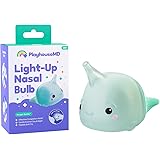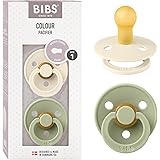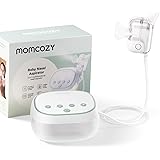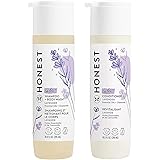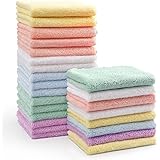The sound of your child’s persistent cough echoing through the quiet night is a familiar and often unsettling experience for parents everywhere. Watching our little ones struggle with respiratory symptoms can evoke a profound sense of helplessness, sparking a desperate search for effective, safe remedies. Thankfully, as Dr. Anjuli Gans highlights in the video above, there are several practical strategies we can implement right in our own homes to provide comfort and promote recovery.
Managing a child’s cough at home involves more than just addressing the symptom; it’s about supporting their overall well-being and immune response. While a cough is often a natural reflex to clear irritants from the airway, understanding its nuances and employing appropriate interventions can significantly alleviate discomfort. This comprehensive guide expands upon the expert advice shared, offering deeper insights into effective home management for your child’s cough, ensuring you are well-equipped to navigate these challenging periods.
Understanding Your Child’s Cough
Before diving into remedies, it’s beneficial to understand the different characteristics of a child’s cough, as this can sometimes offer clues about its underlying cause. While most childhood coughs are benign and self-limiting, often stemming from common viral infections like the cold or flu, their presentation can vary significantly. A wet, productive cough typically suggests mucus buildup, while a dry cough may indicate irritation or inflammation in the airways.
Other specific cough types, such as the characteristic “barking” cough associated with croup or the rapid, repetitive cough of pertussis (whooping cough), often warrant closer attention. Recognizing these distinctions can help parents communicate more effectively with healthcare providers if professional medical advice becomes necessary. However, for the majority of viral coughs, thoughtful home care remains the cornerstone of management, providing immense comfort to your ailing child.
Soothing a Child’s Cough with Honey and Warm Liquids
One of the most time-tested and often recommended remedies for a child’s cough, especially for those over one year of age, is honey. As Dr. Gans mentioned, honey acts as a natural demulcent, coating the throat and providing soothing relief from irritation, which can help reduce the frequency and severity of coughing fits. Its thick consistency can also work as a mild cough suppressant, particularly effective for nocturnal coughs that disrupt sleep.
Beyond honey, sips of warm apple juice or other clear liquids like broth or warm water with lemon can be incredibly beneficial. Warm fluids help to thin mucus, making it easier for your child to clear their airways, and provide essential hydration. It is crucial to remember the recommendation: honey should never be given to infants younger than one year due to the risk of infant botulism, a rare but serious illness.
Leveraging Mist and Humidity for Congestion Relief
Creating a moist environment is another powerful strategy for managing a child’s cough and associated congestion. Dry air can irritate sensitive respiratory passages and thicken mucus, exacerbating coughing and discomfort. Introducing mist or steam helps to loosen tenacious secretions, making them easier to expel, and can reduce inflammation in the airways.
A cool-mist humidifier placed in your child’s room, away from direct reach, can work wonders overnight, transforming the atmosphere into one conducive to easier breathing. Alternatively, a steamy bathroom offers a quick, albeit temporary, solution; simply run a hot shower and let your child sit in the steamy room for 10-15 minutes. Ensure the humidifier is cleaned regularly according to manufacturer guidelines to prevent the growth of mold or bacteria, which could ironically worsen respiratory issues.
Effective Nasal Saline and Suction Techniques
Congestion, particularly in infants and young children who are obligate nasal breathers, often contributes significantly to a child’s cough by causing post-nasal drip. Nasal saline drops or sprays are a gentle yet highly effective method for clearing these nasal passages. Saline solution helps to thin mucus, making it less sticky and easier to remove, while also washing away irritants and pathogens.
Following the application of saline, especially for infants and toddlers, gentle suction with a bulb syringe or a nasal aspirator can physically remove the loosened mucus. This technique not only alleviates congestion but also reduces the amount of mucus dripping down the back of the throat, which is a common trigger for coughing. Regular application, especially before feeds and sleep, can dramatically improve comfort and feeding efficiency for your child.
The Critical Role of Fluids for Healing and Hydration
Maintaining adequate hydration is paramount when your child is battling a cough or any illness. Illness often leads to increased fluid loss through fever, sweating, and breathing, making children particularly vulnerable to dehydration. Beyond preventing dehydration, generous fluid intake plays a direct role in thinning respiratory secretions, facilitating their clearance and consequently reducing the intensity of a child’s cough.
Encourage your child to drink small, frequent amounts of their preferred clear fluids such as water, diluted juice, oral rehydration solutions, or clear broths. Avoiding sugary sodas or highly caffeinated beverages is generally advisable, as they can sometimes act as diuretics or irritate a sore throat. Closely monitor for signs of dehydration, including decreased urine output, dry mouth, lethargy, or absence of tears, which would indicate a need for more aggressive fluid management.
Prioritizing Rest for Optimal Recovery
Rest is arguably one of the most underrated yet vital components of recovery from any illness, including a child’s cough. A child’s immune system works tirelessly to fight off infection, and this process demands a significant amount of energy. Adequate sleep allows the body to conserve energy, allocate resources to immune function, and initiate cellular repair mechanisms, thereby accelerating healing.
Creating a conducive environment for rest involves minimizing distractions, maintaining a comfortable room temperature, and sticking to a consistent sleep schedule as much as possible. If coughing is particularly disruptive at night, implementing other home remedies like a humidifier or honey (for those over one) before bedtime can help ensure more restful sleep. Prioritizing rest not only benefits the child but also helps parents manage the demands of caregiving during illness.
When to Seek Professional Medical Attention for a Child’s Cough
While most coughs in children resolve with supportive home care, it is absolutely crucial for parents to recognize the warning signs that necessitate professional medical evaluation. Knowing when to contact a doctor can prevent complications and ensure your child receives timely and appropriate treatment. Several indicators should prompt immediate medical consultation.
If your child is experiencing difficulty breathing, characterized by rapid breathing, nostril flaring, retractions (sucking in of the skin between the ribs or at the neck), or wheezing, seek urgent care. A cough accompanied by a high fever, especially in infants under three months of age, or a fever lasting more than a few days in older children, is also concerning. Other red flags include lethargy, decreased alertness, cyanosis (a bluish tint around the lips or fingernails), a persistent cough lasting more than two to three weeks, or any sudden worsening of symptoms. Trust your parental instincts; if something feels seriously wrong, always err on the side of caution and consult with a healthcare professional regarding your child’s cough.


